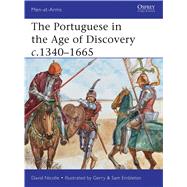
| Introduction | p. 3 |
| Portugal, Spain and the 13th-century Reconquista | |
| the Islamic maritime legacy | |
| the 14th-century English alliance | |
| African and Muslim trading networks | |
| 15th-century circumnavigation of Africa and trade with the Indies | |
| 16th-century dominance | |
| defeat in Morocco | |
| 17th-century Spanish rule | |
| the Dutch wars | |
| Chronology | p. 6 |
| Portuguese Armies Before the Hundred Years' War | p. 10 |
| A new aristocracy | |
| English and French influences | |
| reforms of Fernando I | |
| centralization under the Aviz dynasty | |
| Organization & Recruitment, c.1400-1560 | p. 12 |
| From feudal to professional armies | |
| the Military Orders | |
| the fidalgos | |
| crossbowmen | |
| conscription for the colonies | |
| maritime recruitment | |
| weak strength and organization of colonial garrisons | |
| Mercenaries & Colonial Forces | p. 17 |
| Renegades | |
| foreign volunteers | |
| enlisted prisoners | |
| colonial and native troops | |
| Motivation, Training & Morale | p. 20 |
| Slaving | |
| the crusading tradition | |
| missionaries | |
| prestige | |
| wealth | |
| Training | |
| Acclimatization | |
| eagerness for combat | |
| Strategy & Tactics | p. 33 |
| 'Armed trading' | |
| the networks of coastal enclaves and forts | |
| Tactics: 'amphibious' infantry and naval gunfire support | |
| reinforcement expeditions | |
| Warships, Equipment & Weapons | p. 37 |
| Galleys, caravels and carracks | |
| crews and naval guns | |
| the ordeal of ocean voyages | |
| Arms and armour | |
| Crossbows | |
| Firearms | |
| artillery | |
| Select Bibliography | p. 42 |
| Plate Commentaries | p. 44 |
| Index | p. 48 |
| Table of Contents provided by Ingram. All Rights Reserved. |
The New copy of this book will include any supplemental materials advertised. Please check the title of the book to determine if it should include any access cards, study guides, lab manuals, CDs, etc.
The Used, Rental and eBook copies of this book are not guaranteed to include any supplemental materials. Typically, only the book itself is included. This is true even if the title states it includes any access cards, study guides, lab manuals, CDs, etc.